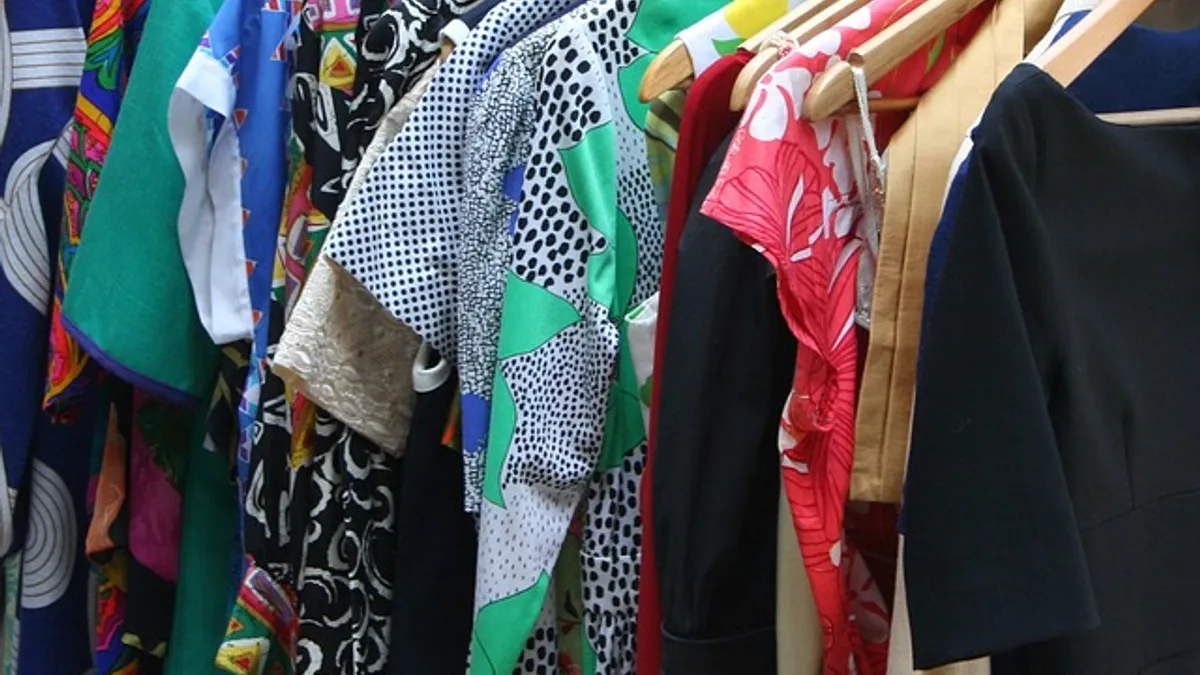Dive Brief:
- A new report from Greenpeace Germany says "recycling is not a solution" for most textile waste because it's not economically feasible to process clothes into new fibers due to "technological challenges," as reported by Quartz.
- According to the report, 95% of the clothing that is thrown away could be worn again or repaired with minor alterations. Yet mechanical recycling processes that chop up the material limit those possibilities and blended fibers, such as cotton and polyester, create additional complications. While some chemical recycling methods are in the works, none have become feasible on a large scale so far.
- The report calls out "fast fashion" — clothing that is not meant to be durable — as a particular issue. For example, H&M offers vouchers for recycling textiles in its stores but the company isn't recycling the majority of that into new garments and uses virgin resources for its products instead. Donations are also not a perfect solution as secondhand clothing often ends up being sent to other countries in larger quantities than they can handle.
Dive Insight:
While mending clothes or turning them into rags used to be common practice many decades ago, cultural norms have shifted away from thrift toward consumption. According to the Greenpeace report, clothing production doubled between 2000 and 2014 with the average person buying 60% more items of clothing every year and keeping them for about half as long as they used to. This is part of an overall trend toward increased shopping, particularly online, that has been seen around Black Friday this year.
In addition to all of the related environmental factors involved in production and transportation, the disposal of these items can have large consequences. National diversion rates for textiles remain low, despite the evolving efforts of operations such as Goodwill and some cities with new collection programs. New York even recently hosted a fashion show with clothing made from old sanitation uniforms to raise awareness about textile recycling.
The fact that people now have more options for keeping their textiles out of landfills is a positive step, but that may not matter if efficient methods can't be found to turn more of that material back into new clothing. Levi Strauss & Co. announced a promising concept with recycler Evrnu earlier this year though it isn't currently viable on a large scale. As is the case with some other types of products, the success of textile recycling still comes down to how much consumers are willing to pay for more sustainable manufacturing practices.















